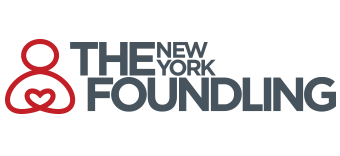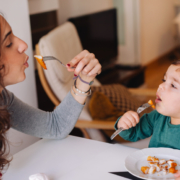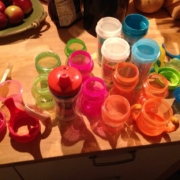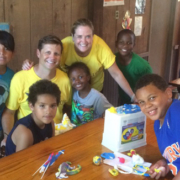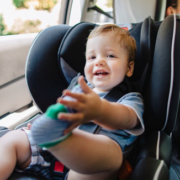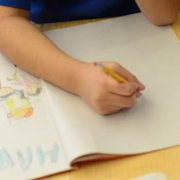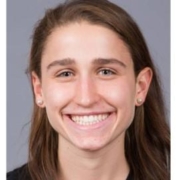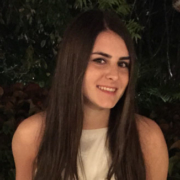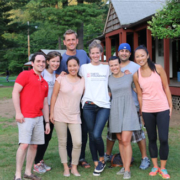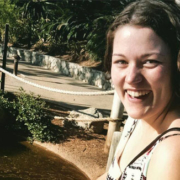Written by Foundling Guest Blogger, Stephanie Kearns, Director of Business Operations
Earlier this year I wrote a post about 2 recipe suggestions for picky toddlers. As a result of that post, I was prompted to write a broader post on the approach to feeding strategy and more meal and snacking options. Nutrition is one of my top priorities when it comes to my family, especially my child. I love food. It is the one area of my life where I splurge. I’m not a clotheshorse, I’m not a world traveler, and I don’t collect stuff. I want to enjoy everything I eat and listen to my body’s needs to fuel my day and keep my energy up for an active family. I know it is not easy to encourage healthy eating with a new human who has discovered sugar and salt but I tell moms that you should feed yourself what you want your child to consume. This is a hard change but I promise it will change the way you feel and how you value your health. I defer to my trusty colleague Carlye Waxman, Director of Food and Nutrition to provide specifics about what children should eat and in what portions but I’m here to provide you with a road map for making the experience less stressful and shortcuts to provide health snacks easily.
The Picky Toddler – just say after me, “my toddler can’t break me, my toddler can’t break me!” But they try! Whew – my little girl once protested for an hour over requiring a cheddar cracker in lieu of her mashed sweet potatoes. But you have to stick with it. They will eventually follow your lead and you will break the cycle. It requires time and patience, both of which parents have very little of but once successful it feels awesome.
- We use reading to keep our child entertained when mealtime is a struggle. Too much stimulus in the house can keep a child from settling down and focusing on eating. Choose a meal time book that they can focus on while eating. Use this tool to get in a groove and then slowly replace this with conversation about the meal, preparation, family stories and questions about his or her day.
- Hiding nutrients – best trick in the book and I have mentioned this is past posts. Your blender or food processor is your best friend. Steam and finely chop any veggie and toss in whatever sauce you serve with pasta, chicken or spread on toast.
- Having a family meal – sit with your child while they eat. If you are doing something else they will always think that is more exciting than eating the meal before them.
- Rename foods to be more relatable to your child. Broccoli = Trees, Cauliflower = Snow Trees etc.
- Out of sight, out of mind. Hide your indulgent snacks like cookies or candy so you don’t tempt your little one. If it’s there, they will want it.
The Travelling Toddler – This is a big one for me. You are always running around when you have a child, whether to school or play date or family visit. It is SUPER easy to grab pre-packaged snacks but they are usually loaded with sugar and sodium. Here are my favorite homemade or store bought healthy and kid friendly options:
- Homemade trail mix – raisins, cashews, almonds, low sodium no sugar cereal tossed together. Give your child the baggie and they can enjoy the special treat! Don’t forget to be sensitive when providing snacks in environments where there might be nut allergies.
- GoGo Squeez applesauce pouches. These can be for parents and kids. No sodium and no added sugar.
- Mini muffins – I love to bake and Lillian loves muffins. You can make super healthy options. I use coconut oil in place of butter and very little brown sugar in my zucchini apple mini muffins. I also make cauliflower “muffins”. The shape sells it. Easy to pack in a hard shell travel container to keep from smashing.
- Baby carrots or graspable chopped carrots. These are sweet, mess free and easy to pack.
- Steamed and roasted string beans. “Green fries”|
The Daycare or Preschool Toddler – we are about to move from a daycare that provided all meals and snacks to one where we provide it all. Here are some packing tips to make it easier on your toddler and teacher!
- Shop around for good quality food storage containers that your child can easily handle. The best and cheapest I have found are at The Container Store. The brand is Cool Gear.
- They have freezable lunch bags to keep the meal cool in transit. This is a great product for travel as well. Here is my favorite option with lots of fun colors and designs: PackIt Personal Cooler
- Don’t introduce new food options in school, especially in the beginning. Serve up their favorite choices when they first start so there are some comforts of home.
- I advise against too many tricks when it comes to food. Once you start cutting sandwiches in the shape of their initials, you’ve gone too far. There is no going back so don’t make packing lunches a production – instead include a sticker in every other meal pack as a surprise that will be special to your child.
As your child grows older, limit the differences in your meal vs. his or hers. Start now if you can! This will encourage you to eat healthier and better define the quality time you need to connect with family. Bon appetit!
